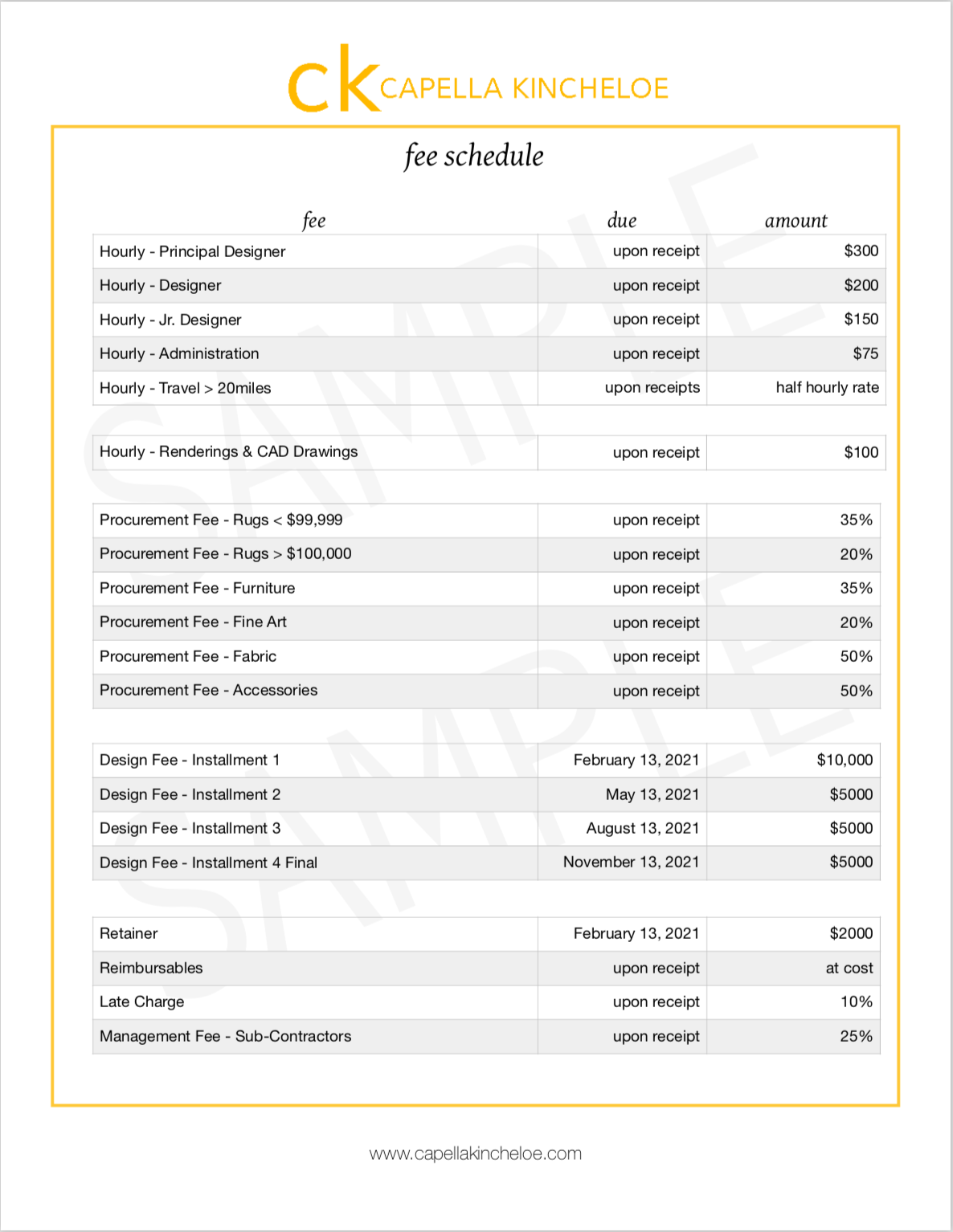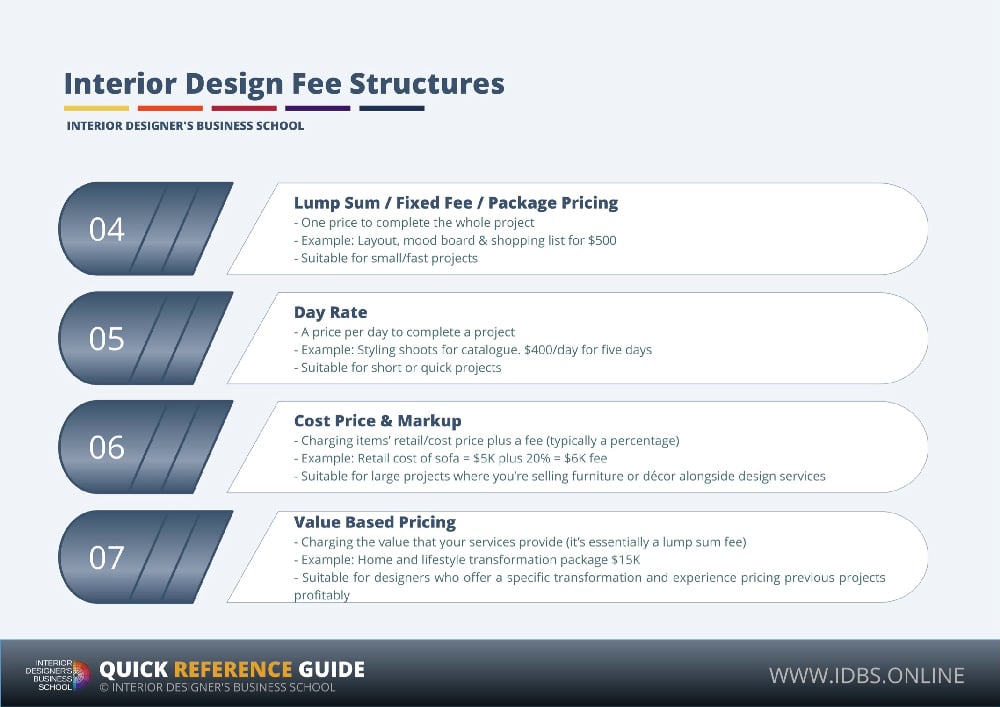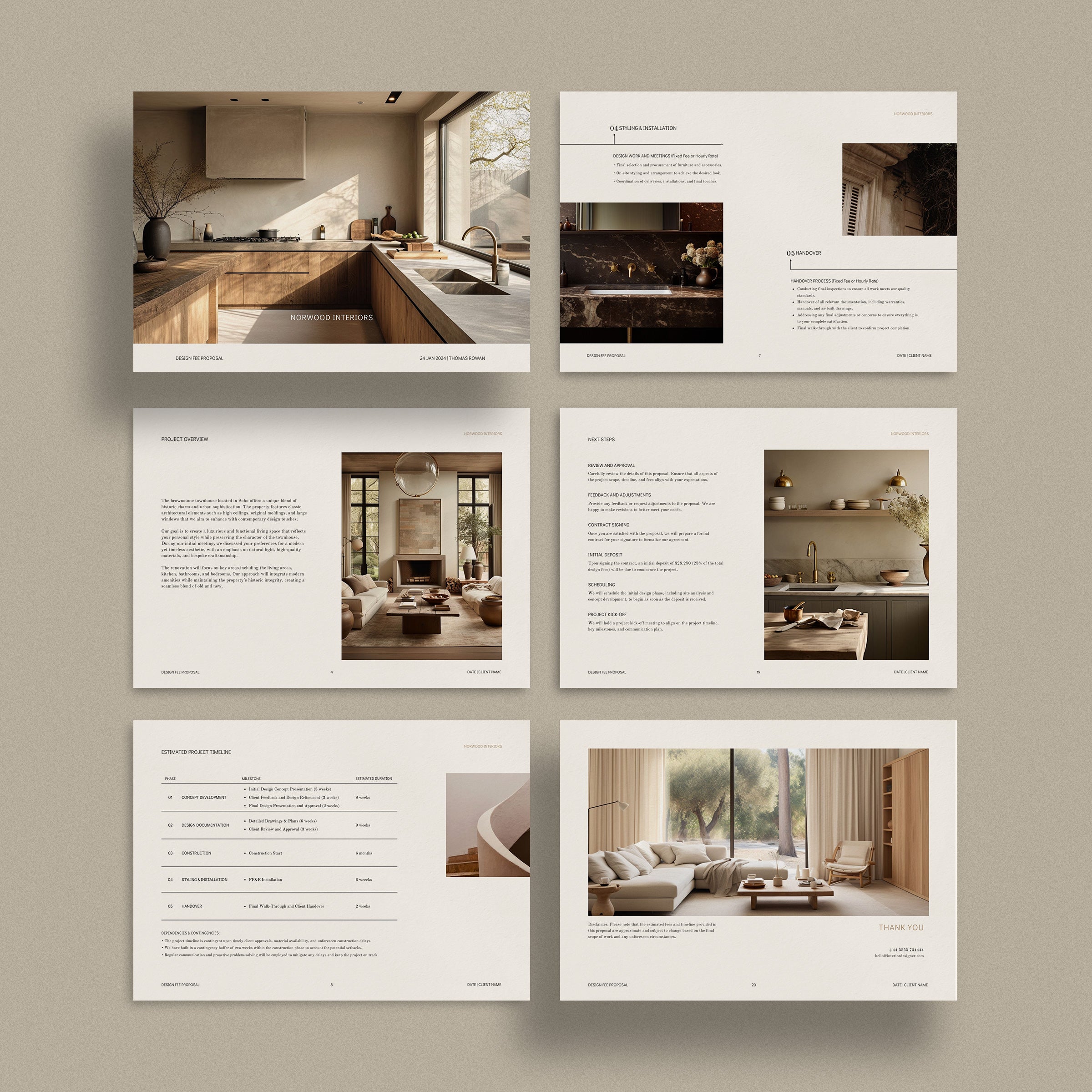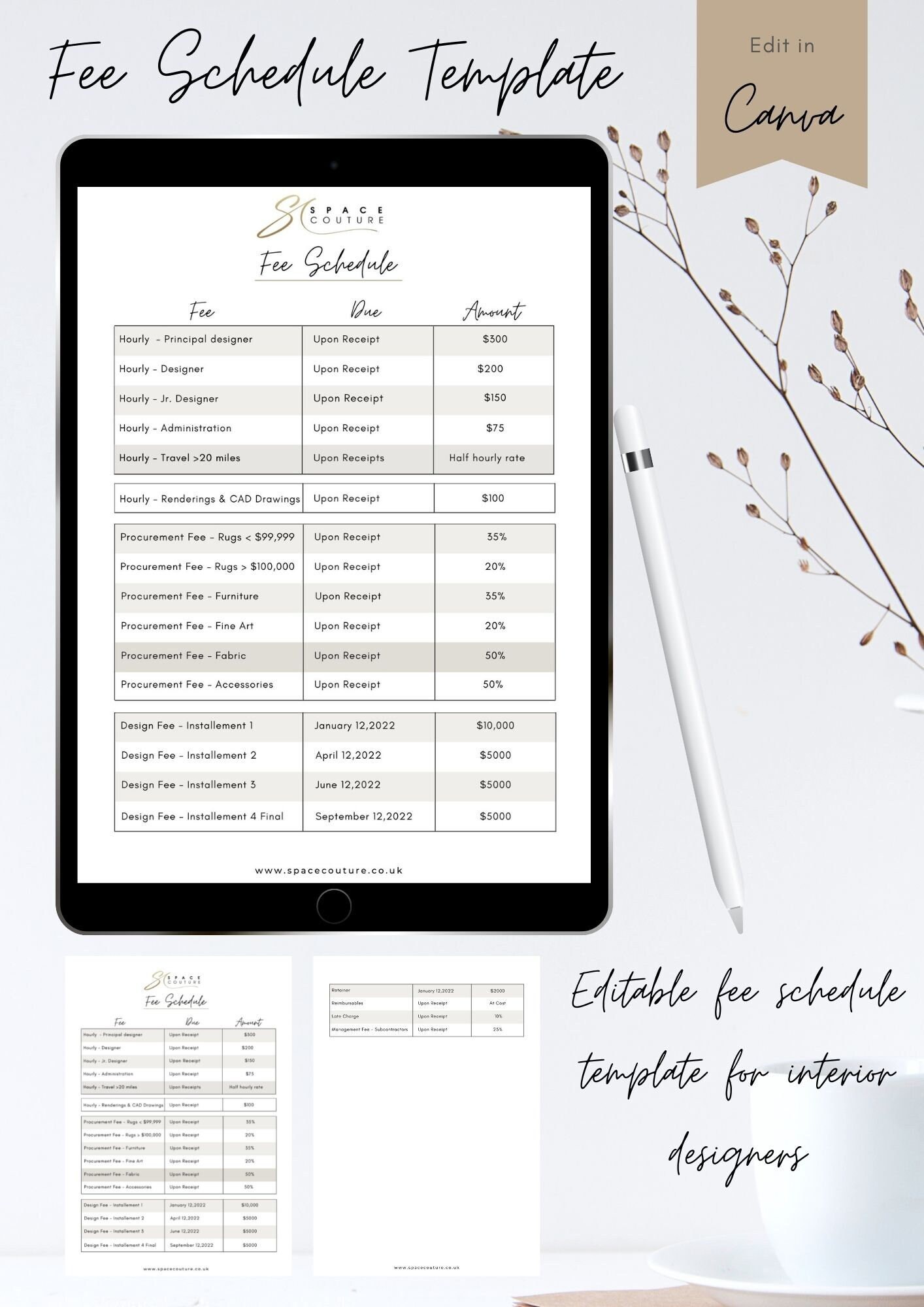Introduction
Navigating the world of interior design can be both thrilling and daunting. Whether you’re a client seeking to revamp your living space or a designer honing your services, understanding the fee structures used in the industry is crucial. This article will break down various interior design fee structures, share personal anecdotes, and provide insights to help you make informed decisions.
Common Interior Design Fee Structures
Interior designers adopt several fee structures depending on their business model, project scope, and client preferences. Let’s delve into the most widely used methods:
- Flat Fees
- Hourly Rates
- Percentage of Project Cost
- Per Square Foot
- Retainer Fees
1. Flat Fees
A flat fee is a fixed amount charged for the entirety of a project. This method is often preferred for projects with clearly defined scopes, such as a single room redesign.
Pros and Cons of Flat Fees
| Pros | Cons |
|---|---|
| Predictable costs for clients | Additional work may not be covered |
| Easy budgeting | Less flexibility for unforeseen changes |
When to Use Flat Fees
Flat fees work best for straightforward projects like single room makeovers or seasonal decor updates. They provide clarity for both the designer and the client.
2. Hourly Rates
In this structure, designers bill their clients based on the hours worked. This method is often favored for consultation services or ongoing projects.

Pros and Cons of Hourly Rates
| Pros | Cons |
|---|---|
| Flexible for scope changes | Clients may feel uncertain about total costs |
| Ideal for ongoing projects | Incentivizes longer projects |
When to Use Hourly Rates
Hourly rates are suitable for clients looking for long-term design partnerships or those who want to make incremental changes over time.
3. Percentage of Project Cost
Some designers charge a percentage of the total project cost. This approach aligns the designer’s compensation with the overall investment made by the client.

Pros and Cons of Percentage of Project Cost
| Pros | Cons |
|---|---|
| Aligns designer’s interests with the client’s budget | May encourage overspending |
| Transparent pricing | Harder to estimate upfront costs |
When to Use Percentage of Project Cost
This method is preferable for large-scale renovations or commercial projects, where costs can vary significantly.
4. Per Square Foot
Charging per square foot is a straightforward pricing model that provides clarity for both parties. The cost is determined by the total square footage of the space being designed.

Pros and Cons of Charging Per Square Foot
| Pros | Cons |
|---|---|
| Easy for clients to understand | Not suitable for complex design needs |
| Standardized pricing | May not reflect design complexity |
When to Use Per Square Foot
This structure is often used for residential projects where the designer’s scope is clear and defined, like a new build or a significant remodel.
5. Retainer Fees
Retainer fees are an upfront payment to secure a designer’s services for a specified period. This model is commonly used for clients who need ongoing design consultations.

Pros and Cons of Retainer Fees
| Pros | Cons |
|---|---|
| Secures designer availability | May require substantial upfront payment |
| Provides predictability in costs | Less flexibility in project scope |
When to Use Retainer Fees
Retainer fees are ideal for businesses or clients with continuous design needs, ensuring consistent access to design expertise.
Factors Influencing Interior Design Fees
Several factors can influence the overall cost of interior design services. These include:
- Designer Experience
- Geographic Location
- Project Complexity
- Market Demand
- Quality of Materials and Furnishings

Real-Life Examples: My Interior Design Journey
As an interior designer, I’ve had the privilege of working with diverse clients, each with unique needs and budget constraints. Early in my career, I learned the importance of clearly communicating fee structures. For instance, I once took on a project using the flat-fee model, only to find myself spending far more time than anticipated on revisions. This experience taught me the value of being transparent and adaptable in my pricing approach.
In another project, I utilized an hourly rate for a client who wanted to transform their office space over time. This flexibility allowed us to experiment with designs without the pressure of a fixed budget, leading to a successful and satisfying collaboration.
FAQs about Interior Design Fee Structures
What is the average cost of hiring an interior designer?
The average cost can vary significantly based on location and project scope. Generally, you can expect to pay between $50 to $200+ per hour or a flat fee ranging from $1,500 to $10,000 for complete projects.

Is it worth hiring an interior designer?
Absolutely! While hiring a designer involves a cost, their expertise can save you time, money, and stress in the long run, ensuring your vision is realized effectively.
How do I choose the right fee structure?
Choosing the right fee structure depends on your project’s scope, your budget, and your comfort level with risk. Discuss options with potential designers to find a structure that suits both parties.
